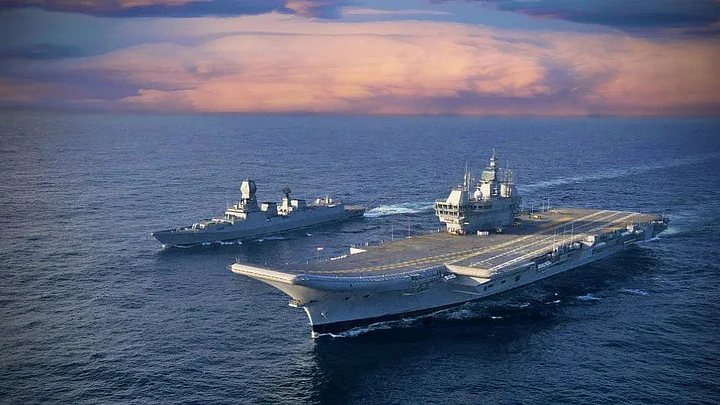In an important step towards fortifying India's defence forces, Prime Minister Narendra Modi on Friday, 2 September, commissioned the country's first-ever indigenous aircraft carrier, the INS Vikrant.
This comes at a time when the Indo Pacific and the Indian Ocean are becoming hotbeds of competition due to their strategic significance. Several countries, including the United States (US) and China, have been enhancing their naval capacities to garner greater influence in the littoral region.
PM Modi said that the warship was another step that India had taken towards becoming a developed nation and making the country's defence sector self-reliant, which is a long-standing goal of the administration.
With the commissioning of INS Vikrant, India has joined a select group of nations which have the capacity to develop an indigenous aircraft carrier. As of now, the only other countries which have been able to do so are the US, Russia, China, France, and the United Kingdom.
All You Need to Know About INS Vikrant
Called a "city on the move" and equipped with state-of-the-art facilities, here's everything you need to know about the INS Vikrant, which is hitherto referred to as Indigenous Aircraft Carrier-1 (IAC-1).
INS Vikrant is 262 metres long and 62 metres wide.
The Indian Navy said that the carrier is as big as two football fields put together and 18 floors tall.
The ship can also accommodate 1,600 crew members and 30 aircrafts.
It has a maximum designed speed of 28 knots and an endurance of 7500 nautical miles.
Further, the hangar of the warship is as big as two Olympic-size pools.
Initially, it will carry the MiG fighter aircraft, along with helicopters. The Navy will also conduct aviation trials after it gets the command of the ship.
There are machines on board that can make 3,000 chapatis within an hour.
History of the Air Carrier
Named after the Navy's crown jewel from 1961-97, INS Vikrant has become the second aircraft carrier in the Indian Navy's current fleet after the 44,500-tonne INS Vikramaditya, which was inducted from Russia for $2.33 billion.
Work on the ship design had started in 1999 and the keel was laid 10 years later. It has been designed by the Indian Navy's Directorate of Naval Design and put together by the Cochin Shipyard Limited in Kerala's Kochi for a whopping cost of Rs 23,000 crore.
The warship was floated out of its dry dock in December 2011 and launched in 2013. Basic trails concluded only by December 2020.
The sea trial of the ship had started in the coasts of Kochi on 4 August.
While it was commissioned on Friday, INS Vikrant will not be in deployable mode (i.e. ready for combat) for at least another 15 months.
With this new addition to its fleet, India now has two aircraft carriers, 10 destroyers, 12 frigates, and 20 corvettes.
The Commissioning Ceremony
PM Modi commissioned the aircraft into the Indian Navy at the Cochin Shipyard in Kerala's Kochi in the presence of several senior dignitaries, like Defence Minister Rajnath Singh, Kerala Chief Minister Pinarayi Vijayan, and Governor Arif Mohammad Khan.
At the ceremony, Modi also unveiled the new Naval Ensign at the commissioning ceremony, as a mark of India having "shed its colonial past."
Dedicating the aircraft to Chhatrapati Shivaji Maharaj, the PM said, "Till today, Indian Naval flags carried a sign of slavery. This has been replaced with a new one inspired by Chhatrapati Shivaji Maharaj."
He also said that INS Vikrant would strengthen the morale of the country and increase its global standing, emphasising that so far only developed countries had made aircraft carriers.
"Today, India joins the countries that build such large aircraft carriers with indigenous technology," the prime minister said, adding, "INS Vikrant is an example of the government's thrust to making India's defence sector self-reliant."
In an apparent dig at the Congress, PM Modi also said that in the past, security concerns in the Indo-Pacific and the Indian Ocean had been ignored, but now the government was making it a top priority.
"That is why we are working in every direction, from increasing the budget for the Navy to increasing its capability," he asserted.
(At The Quint, we question everything. Play an active role in shaping our journalism by becoming a member today.)
